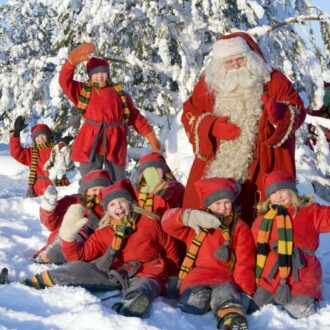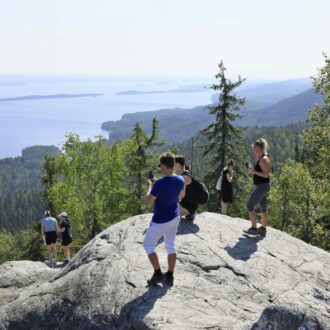For a breath of fresh air and a taste of traditional Finland, hop into a wooden rowboat 12 metres long.
Summer in Finland arrives rapidly, with spring days lengthening by five and a half minutes daily. With it come plenty of special events which make the most of the ample hours of daylight and, if one is a little lucky, sunlight too. Water plays a significant part in many of these programmes, typically as a backdrop for the countless lakeside summer cottages.
For one group, water is the medium and the message – or if not the message, it can certainly be seen as a type of massage, for the body and the mind. From the middle of May the church boat crews wait for the lake ice to melt so they can take to the water in these elegant wooden rowboats, and start getting in shape for long summer days and longer rows ahead.
In times gone by, these elegant, long boats took up to 50 parishioners from distant farms and hamlets located near the many lakesides to the important Sunday services, with all able-bodied persons taking their turn at the oars.
The journeys were sometimes more than a day’s travel, and when the weather turned bad the consequences could be catastrophic. Swimming was not a common survival skill. Nowadays church boats’ use is purely recreational, offering a combination of application and exercise in a highly social setting and attracting a broad cross-section of people, sat in pairs down the 12-metre craft, 14 at a time.
Get a kick out of rowing
Some crews are obviously highly athletic and have been training through the winter, indoors on the rowing machines or outdoors on the ski tracks. Others take to the water in spring primarily to get outside and enjoy some gentle exercise where the air is the freshest, and the elements the freest.
Mother of two Eve-Liisa Virehausz, who rows on Järvenpää Lake with the club there, says, “It gets me out and away from all the daily grind. I’m not so worried about the weather – it’s such a different environment out on the water that I’m refreshed whatever it’s like.”
Exercise is part of the attraction, and coordinating it with the rest of the crew is both a challenge and a reward. Everyone gets a kick out of harmonising their efforts to move the boats efficiently and smoothly along – as well as enjoying the views of the countryside.
Opportunities to join one of these crews obviously depend on location, with most clubs and boathouses located on lake- or shoresides in southern and eastern Finland. Many groups are sponsored by companies, part of fitness promotion projects typical of modern enterprises; others are vestiges of the original congregational rowers, with the boats owned and maintained purely by local enthusiasts. Crews also gather at regattas held throughout the country, testing their skills against each other and enjoying the community of like-minded spirits partaking in this essentially traditional Finnish survival skill.
Though the season begins at the end of May, most events are held in July and August. The largest single regatta is the Sulkava Rowing Race in early July, with around 7,000 participants.
By Anthony Shaw, June 2011



